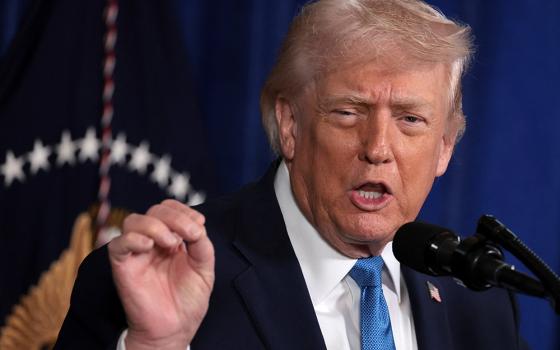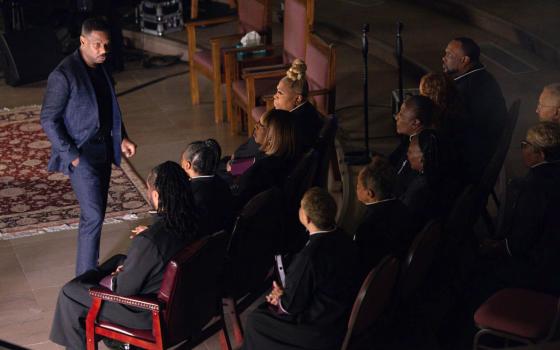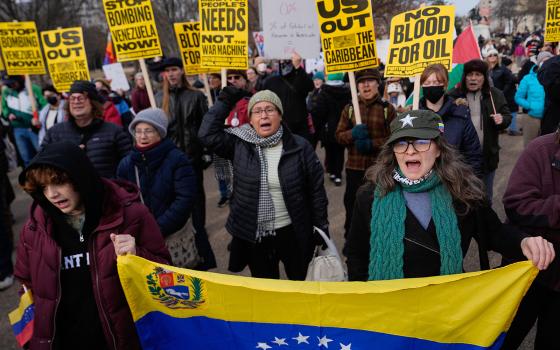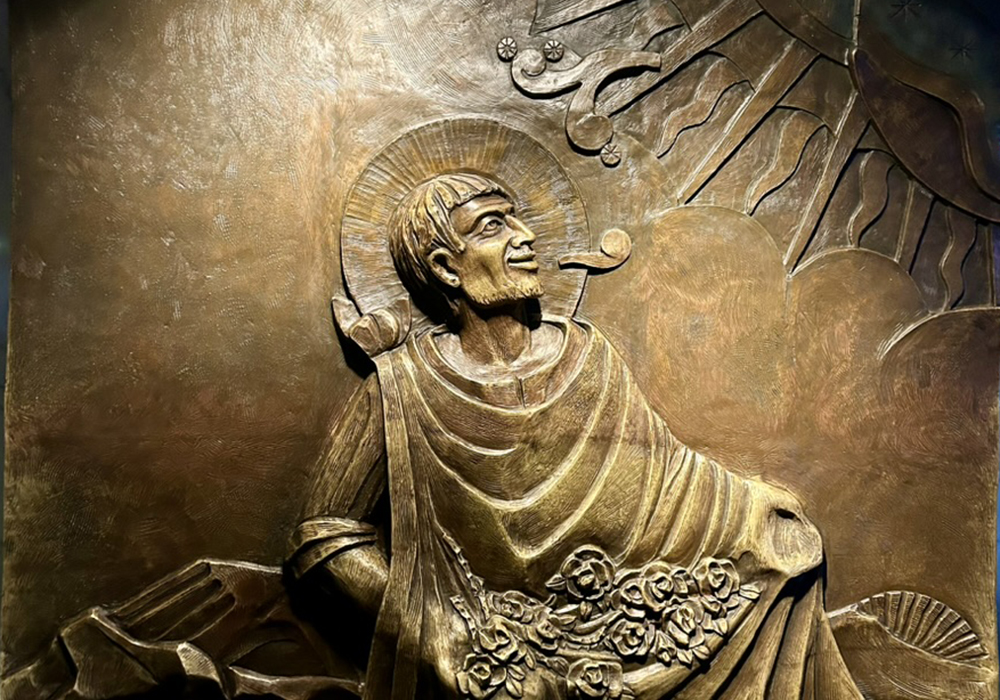
Bronze relief of Juan Diego at the Basilica of Our Lady of Guadalupe in Mexico City (Molly Brockwell)
On my way home in the Boston transit system after a long day, I sat next to a woman who had worked 12 hours and just had a bad day. I looked at her and smiled, allowing an invitation to tell me all about her experience. "It's been a 'Now what?' day," she said. It all started when she set her phone to charge, but the plug did not connect to the wall, so her phone alarm did not sound. She woke up late, and ran behind all morning, arrived late to work and received her first warning. On the way home, her car died. She had to take the bus home. "Now what?" she exclaimed. Sitting with her, I could not help but offer an ear and a little prayer. As I bid her farewell and wished her the best, she said she looked forward to getting home and sleeping in a warm bed. She was confident that tomorrow was going to be a better day.
On this feast day of Our Lady of Guadalupe, I cannot help but think of the central Mexico community that Juan Diego called home, an area that experienced more than its share of "now what" moments. Before the arrival of the Spaniards, Juan Diego had experienced 47 years of familiar and comfortable traditions and beliefs — a sense of "normal." When the Spaniards colonized Mexico in 1521, Juan Diego was part of a cultural apocalypse — his lived experience and set of beliefs flipped upside down, and a new community and culture emerged. The phrase "culture shock" does not begin to describe it. In the 10 years after the colonization of Mexico, Juan Diego experienced the rise of a new culture, war, famine, sickness, and the death of his wife and loved ones. To make matters worse, his only surviving relative had caught a plague probably brought by those same Spaniards.
History tells us that colonization of the Americas featured many acts of evil, notably disrespect of the sanctity of all creation, dehumanization, and unnecessary killing. But at the same time, signs of light could be found. A humanist spirit was present amid the chaos in La Nueva España, led by the Franciscans, Augustinians and Dominicans. Voices such as Bartolomé de Las Casas, Antonio de Montesinos, and Martin de Valencia called for accountability and the need to respect the sanctity of the lives of the Indigenous. I am sure that Juan Diego saw the worst and best of the human spirit during colonization. I also think that Juan Diego and the early converts to the Catholic faith must have experienced a fraternal approach from the early missionaries. A little light shone amid all the "Now what?" moments.
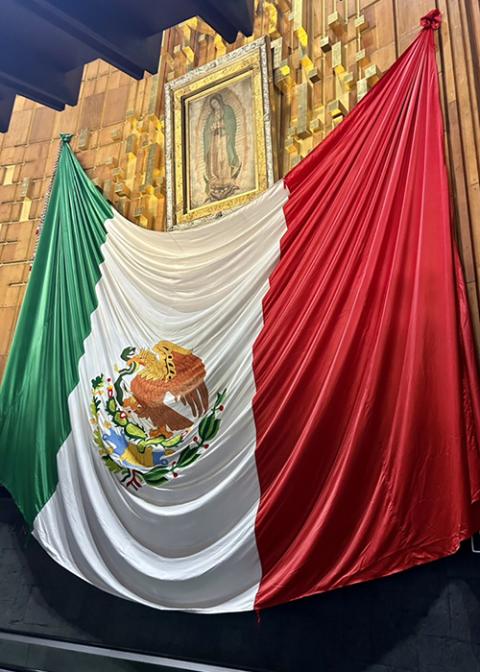
Image of Our Lady of Guadalupe at the Basilica of Our Lady of Guadalupe in Mexico City (Molly Brockwell)
For Juan Diego, Advent 1531 was a time of mourning the past and coping with an uncertain present. At the least expected moment, Juan Diego received his own "Now what!" In a second, the extraordinary beauty of a song and an unseasonable landscape interrupted an ordinary walk to church. All Guadalupanos know the story of the Nican Mopohua, where unpredictable circumstances surpass the imagination. In this extraordinary interaction with the divine, Our Lady of Guadalupe would summon a simple, colonized, and childless widower as a messenger.
The interaction with Our Lady of Guadalupe transformed Juan Diego. His beliefs moved from the known to the embodiment. When he accepted his mission to carry the message of Our Lady of Guadalupe, Juan Diego moved beyond doubts and insecurity. He gained the courage to do something unexpected; knowing that Our Lady, his mother, walked at his side, always.
In that season of Advent of 1531, Juan Diego never imagined that he, of all people, would be at the center of this message of hope. In his "Now what?" moment, Juan Diego took a risk. Filled with trust in God and Our Lady of Guadalupe, Juan Diego moved forward holding onto the divine gift of love and hope. Moved by Our Lady of Guadalupe, Juan Diego's faith became a radical gift for all of us.
Advertisement
Our Lady of Guadalupe highlights the will of God for the salvation of the Indigenous, mestizos, and all. Her message in Nahuatl, her profound symbolism and image reminds us of the dignity and sacredness of all of people. Mary, the mother of our church, drives home the invitation that all of us are beloved of God: the oppressed, the forgotten, the marginalized, those who keep asking, "Now what?" We are the people of God. We are entitled to God's abundant love. Somos El Pueblo de Dios, y Guadalupe es Nuestra Madre.
Our Lady of Guadalupe gives witness to the miracle that the ordinary can be extraordinary. During the season of Advent, Our Lady of Guadalupe points to our limitless God, one that does not fit within our human limitations. I think of the lady that I met on the bus, the people facing a hard day, those displaced by war or natural disasters, and all of us — as we ask "Now what?" — we are invited to hold on to the message of hope shared by Our Lady of Guadalupe. This Advent, our "Now what?" includes living the virtues of Advent: hope, peace, joy and love. Like Juan Diego, Nuestra Señora de Guadalupe propels us to proclaim the greatness of God and the salvation of Jesus. May our spirit rejoice in God our savior now and forever. ¡Y Que Viva Nuestra Señora de Guadalupe!




